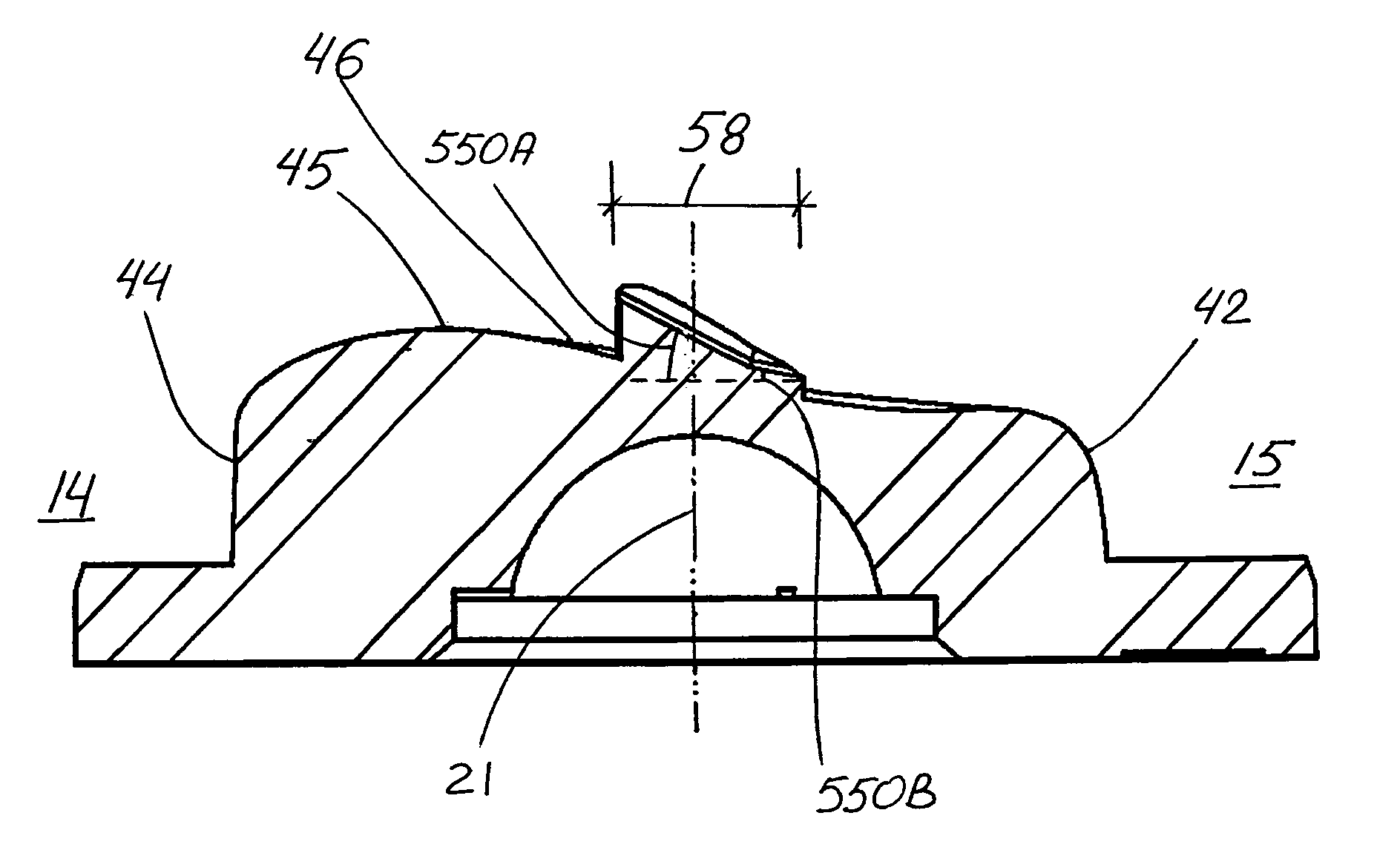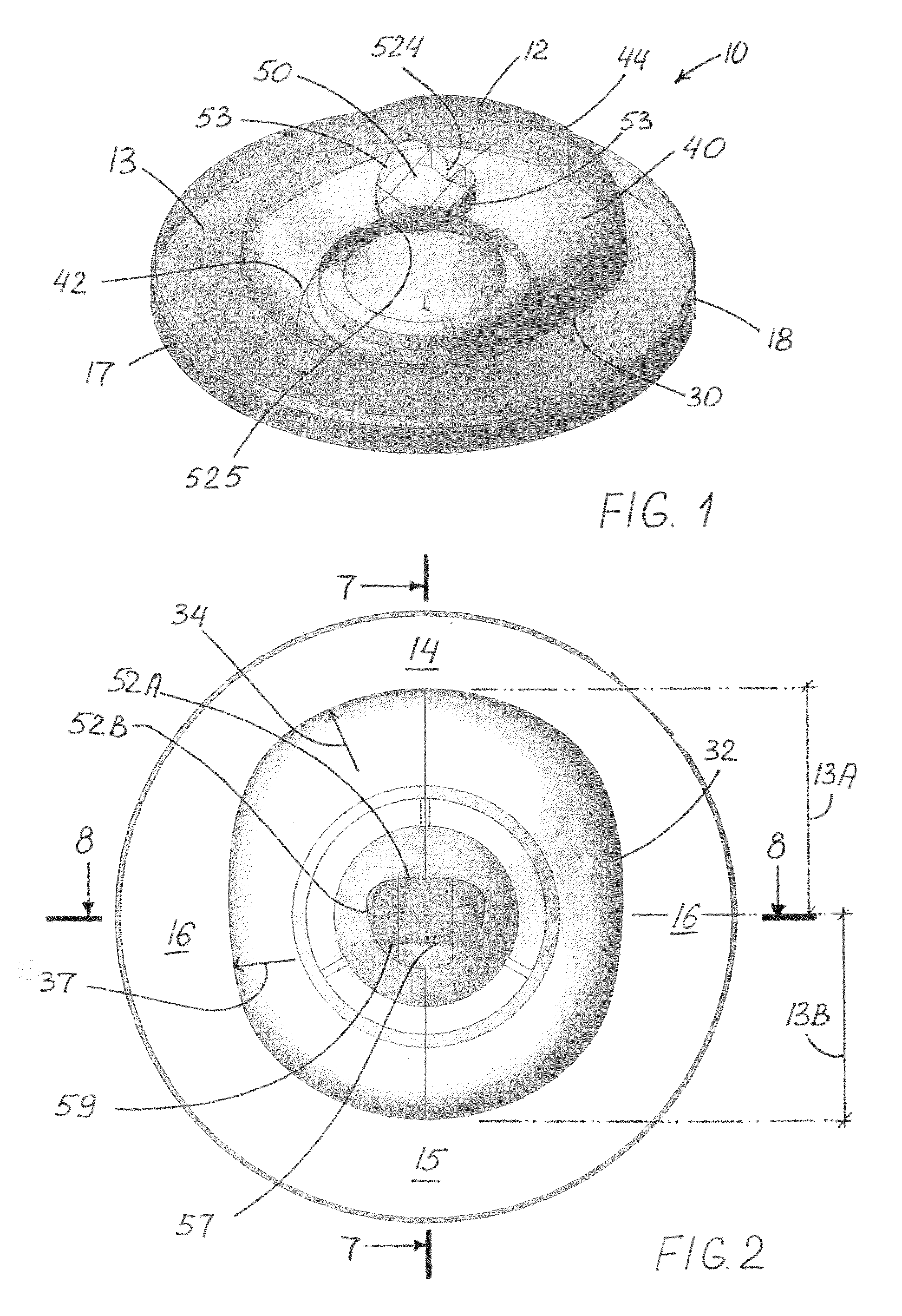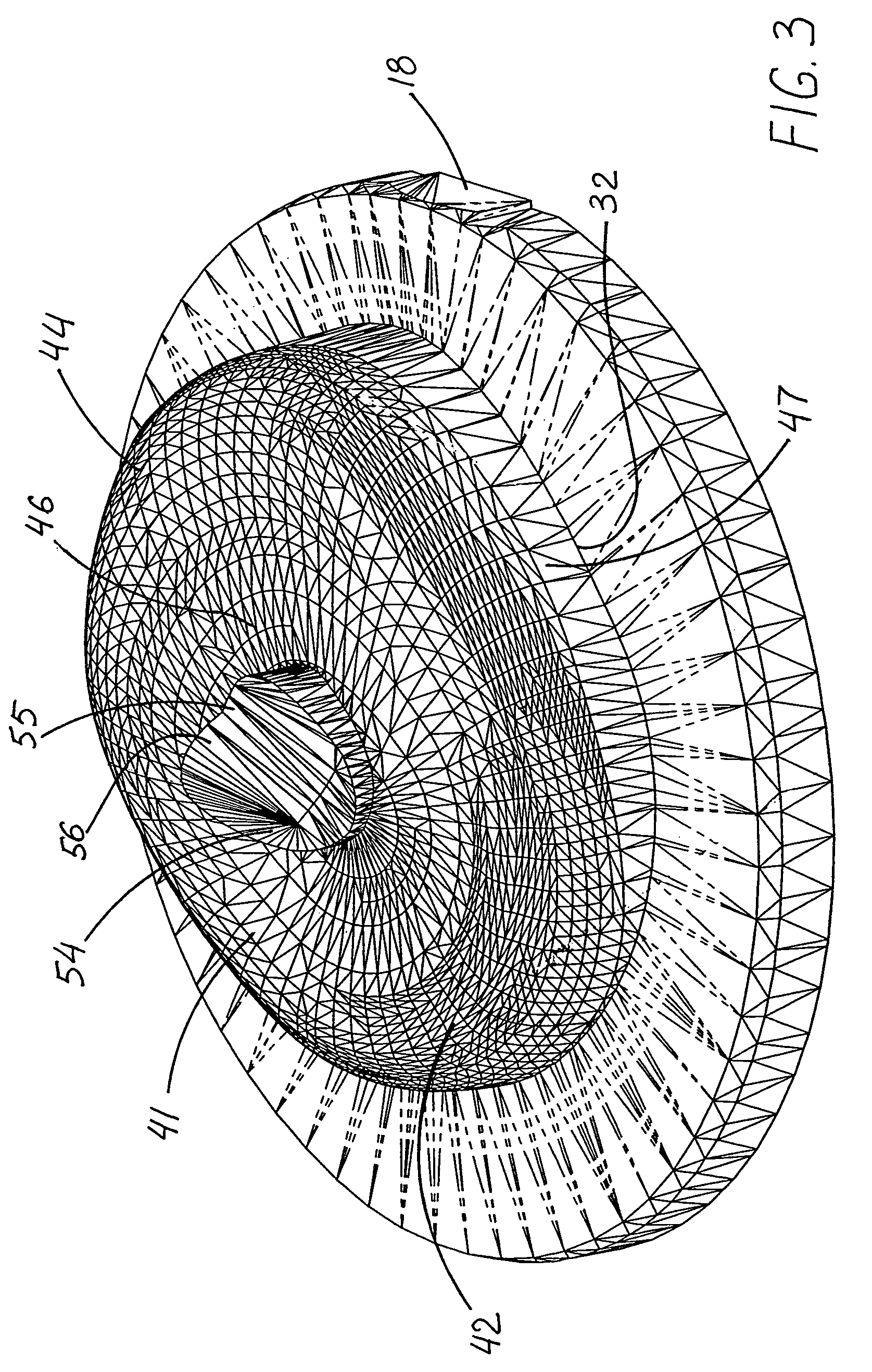Light-directing lensing member with improved angled light distribution
a technology of angled light distribution and lensing member, which is applied in the field of light systems, can solve the problems of increased overall cost of led lighting using such lenses, difficult and expensive manufacturing, and low highly desirable performance of lenses, and achieve the effect of improving uniformity and improving the control of directed ligh
- Summary
- Abstract
- Description
- Claims
- Application Information
AI Technical Summary
Benefits of technology
Problems solved by technology
Method used
Image
Examples
Embodiment Construction
[0052]FIGS. 1-12 show preferred embodiment of an inventive light-directing lensing member 10 in accordance with this invention for off-axial preferential-side distribution of light from a light emitter 20 which has an emitter axis 21.
[0053]Lensing member 10 includes a base end 30 having a perimeter-loop line 32 defining a main plane 13 transverse emitter axis 21, and an outer surface 12 configured for refracting light from emitter 20 in a predominantly off-axis direction toward a preferential front side 14. Outer surface 12 includes a major lens-portion 40 and an axially-located minor lens-portion 50. Perimeter-loop line 32 has distances 13A and 13B from the emitter axis. As best seen in FIG. 2, distance 13A on preferential front side 14 is greater than distance 13B on a non-preferential back side 15.
[0054]Major lens-portion outer surface 41 has a back region 42, a front region 44 and a middle region 46. Front region 44 is centered on front side 14 and extends from base end 30 initi...
PUM
 Login to View More
Login to View More Abstract
Description
Claims
Application Information
 Login to View More
Login to View More - R&D
- Intellectual Property
- Life Sciences
- Materials
- Tech Scout
- Unparalleled Data Quality
- Higher Quality Content
- 60% Fewer Hallucinations
Browse by: Latest US Patents, China's latest patents, Technical Efficacy Thesaurus, Application Domain, Technology Topic, Popular Technical Reports.
© 2025 PatSnap. All rights reserved.Legal|Privacy policy|Modern Slavery Act Transparency Statement|Sitemap|About US| Contact US: help@patsnap.com



